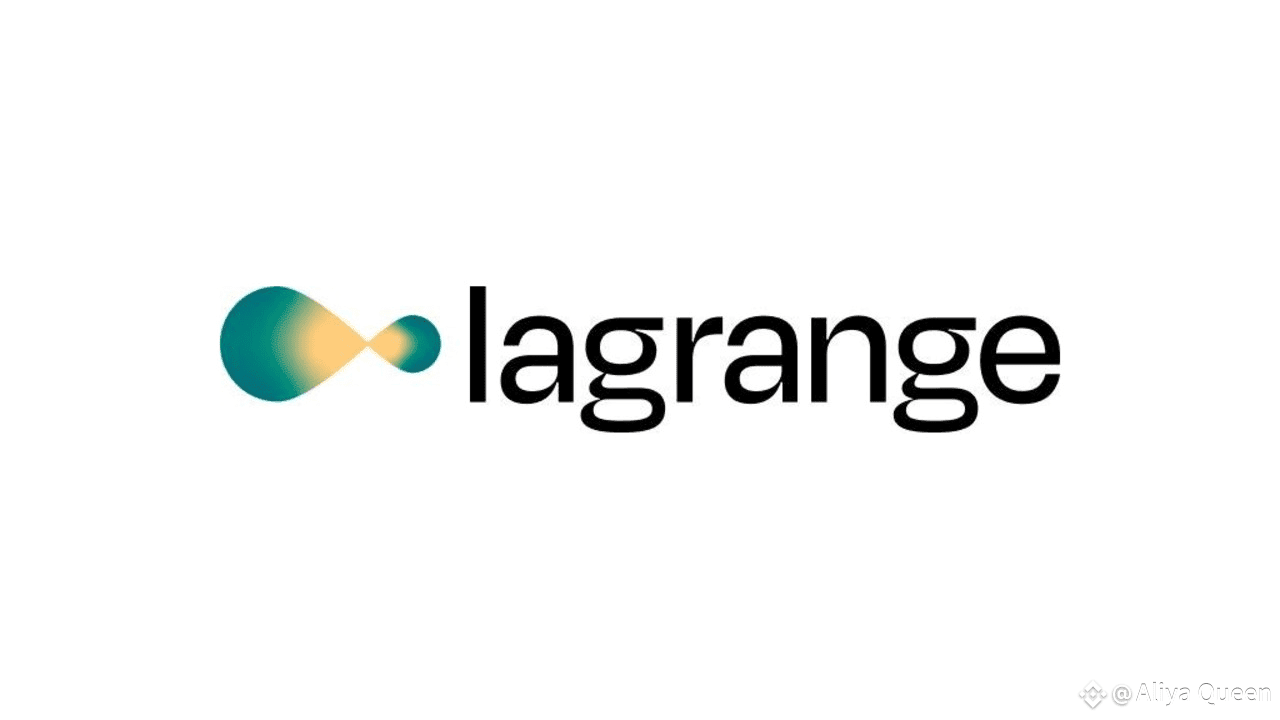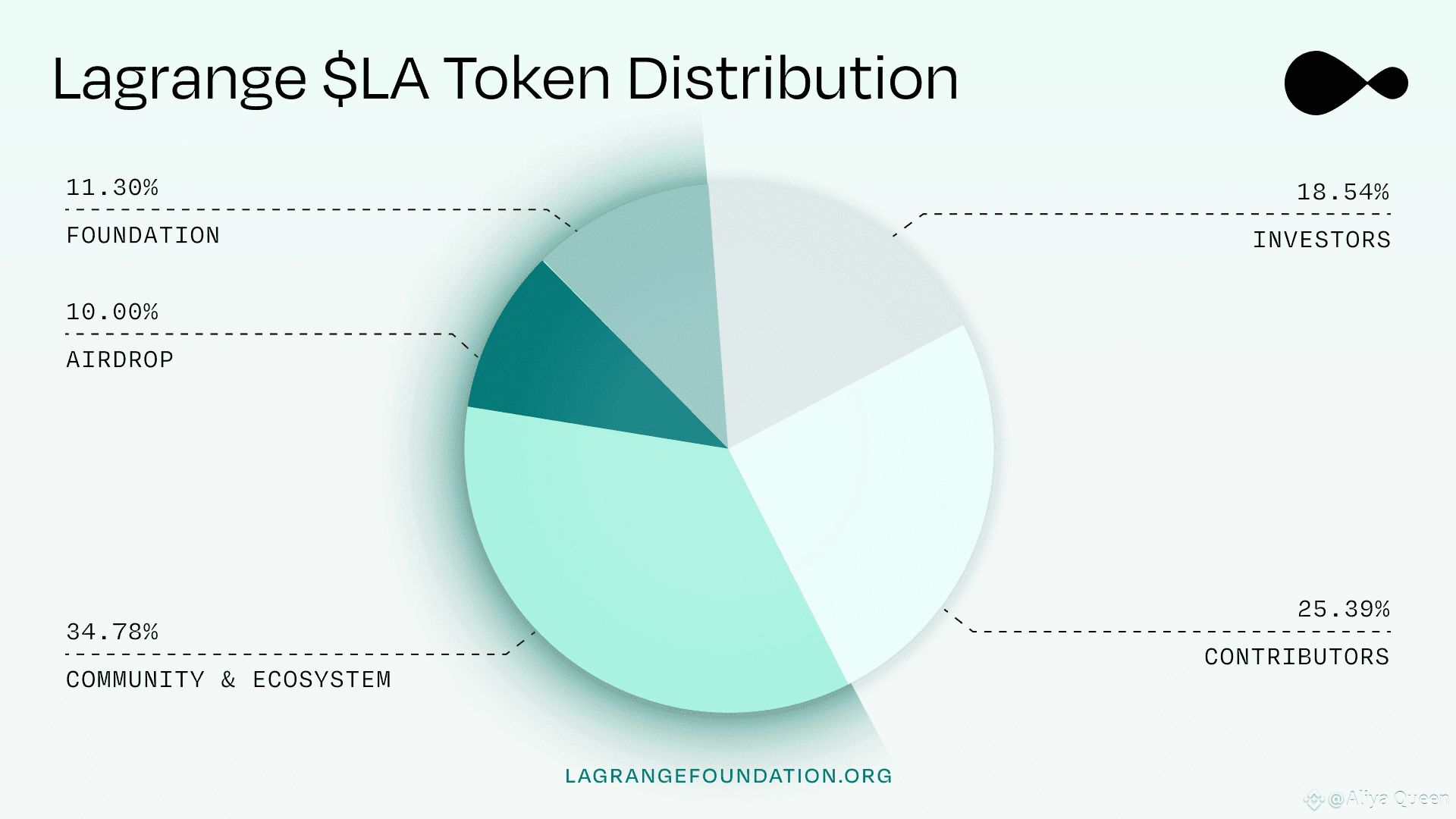In the rapidly evolving landscape of blockchain technology, three fundamental challenges have persistently hindered mainstream adoption: scalability bottlenecks, privacy vulnerabilities, and security trade-offs. Enter Lagrange—a groundbreaking Web3 project that represents nothing less than a paradigm shift in how we conceptualize decentralized computing. Through sophisticated implementation of Zero-Knowledge Proofs (ZKPs) and revolutionary architectural innovations, Lagrange is constructing the computational backbone for Web3's next evolutionary phase.
The Cryptographic Renaissance: Understanding Zero-Knowledge Computing
Zero-Knowledge Proofs represent one of cryptography's most elegant mathematical achievements—the ability to prove knowledge of information without revealing the information itself. Lagrange harnesses this cryptographic marvel to solve blockchain's most pressing limitations, creating a system where privacy, verifiability, and efficiency coexist in unprecedented harmony.
The Mathematical Foundation: At its core, Lagrange's ZK implementation enables computational verification without computational replication. This means complex calculations can be performed once, proven mathematically, and verified instantly across multiple blockchain networks without requiring each network to repeat the expensive computational work.
Deconstructing Lagrange's Decentralized ZK Proof Network
The Network Architecture Revolution
Traditional blockchain networks face an inherent tension between decentralization and efficiency. Lagrange dissolves this tension through its revolutionary decentralized Zero-Knowledge proof network—a constellation of independent nodes that collaboratively generate, verify, and distribute cryptographic proofs without centralized coordination.
Node Ecosystem Dynamics: The network operates through a sophisticated market-driven staking mechanism where participants stake LA tokens to compete for proof generation opportunities. This creates a dynamic, self-regulating ecosystem where:
Performance-Based Rewards: Nodes providing accurate, timely proofs earn network fees and token rewards

Economic Accountability: Poor performance or malicious behavior results in stake slashing
Decentralized Competition: Multiple provers compete, ensuring no single point of failure
Quality Assurance: Market forces naturally eliminate inefficient or unreliable operators
Trust Minimization: Unlike traditional systems requiring trust in centralized entities, Lagrange's distributed architecture ensures cryptographic verification replaces institutional trust. Each proof can be independently verified, creating a trustless computational environment that maintains blockchain's core philosophical principles.
The ZK Coprocessor: Engineering Beyond the Blockchain Trilemma
Breaking the Scalability-Security Paradigm
The blockchain trilemma—the perceived impossibility of simultaneously achieving decentralization, security, and scalability—has long constrained blockchain innovation. Lagrange's ZK Coprocessor represents a fundamental breakthrough that transcends these traditional limitations.
Computational Architecture: The ZK Coprocessor functions as a specialized "cryptographic math engine" designed specifically for high-performance ZK computations. This innovative approach:
1. Off-Chain Execution: Complex computations occur off-chain in optimized environments
2. Cryptographic Verification: Results are packaged as verifiable ZK proofs
3. On-Chain Settlement: Only compact proofs require on-chain verification
4. Trustless Guarantee: Mathematical certainty replaces institutional trust
Performance Metrics: This architecture achieves remarkable efficiency gains:
Network Congestion Reduction: Up to 99% reduction in on-chain computational load
Transaction Cost Optimization: Dramatic reduction in gas fees for complex operations
Throughput Enhancement: Enables high-frequency applications without compromising security
Energy Efficiency: Minimizes computational redundancy across network participants

Application Ecosystem Enablement
The ZK Coprocessor unlocks entirely new categories of blockchain applications previously impossible due to computational constraints:
Privacy-Preserving Smart Contracts: Execute complex business logic while maintaining complete data confidentiality. Financial institutions can process sensitive transactions with mathematical proof of correctness without exposing proprietary information.
Trustless Cross-Chain Bridges: Enable secure asset transfers between different blockchain networks without relying on centralized validators or custodians. Each transfer is cryptographically proven valid across all participating chains.
AI Model Verification: Validate artificial intelligence computations and decisions without revealing proprietary algorithms or sensitive training data—crucial for AI applications in finance, healthcare, and other regulated industries.
Multi-Chain Interoperability: The Universal Web3 Infrastructure
The Fragmentation Solution
Today's blockchain ecosystem resembles a collection of digital islands—isolated networks with limited communication capabilities. Lagrange transforms this fragmented landscape into an interconnected computational ocean through universal ZK proof compatibility.
Cross-Chain Verification: Lagrange's proof network can verify computations performed on one blockchain and guarantee their validity on any other compatible chain. This creates unprecedented possibilities:
Cross-Chain DeFi Evolution:
Unified Liquidity Pools: Access liquidity across Ethereum, Solana, Polygon, and other networks simultaneously
Multi-Chain Yield Farming: Optimize returns by automatically moving assets to highest-yielding opportunities across chains
Cross-Protocol Lending: Collateralize assets on one chain to borrow on another with cryptographic guarantee of security
Universal Identity Systems:
Single Cryptographic Identity: One secure identity usable across all supported blockchain networks
Privacy-Preserving Authentication: Prove identity attributes without revealing personal information
Cross-Chain Reputation: Build and maintain reputation scores that transfer across different blockchain ecosystems
Multi-Chain AI Infrastructure:
Distributed Model Training: Train AI models using data from multiple blockchain networks without data replication
Cross-Chain Inference: Deploy AI models that can process information from any connected blockchain
Decentralized AI Governance: Coordinate AI development and deployment across multiple blockchain communities
EigenLayer Integration: Expanding Security Horizons
Lagrange's integration with EigenLayer creates a revolutionary security model where Ethereum's validator network can secure computations across multiple blockchain networks. This "restaking" mechanism extends Ethereum's $100+ billion security guarantee to protect Lagrange computations, creating unprecedented security assurances for cross-chain operations.
Verifiable AI: The Intersection of Artificial Intelligence and Cryptographic Certainty
The AI Trust Problem
As artificial intelligence becomes increasingly integrated into Web3 applications, a critical challenge emerges: How can users trust AI decisions without understanding the underlying algorithms or accessing proprietary training data? Lagrange's Verifiable AI Inference provides an elegant solution.
Cryptographic AI Validation: Using Zero-Knowledge proofs, Lagrange enables AI models to demonstrate the correctness of their computations without revealing:
Proprietary Algorithms: Model architectures remain confidential
Training Data: Sensitive datasets stay private
Decision Logic: Reasoning processes are proven valid without exposure
Real-World Applications
Decentralized Credit Scoring: A DeFi lending protocol can use AI to assess borrower creditworthiness based on blockchain transaction history. ZK proofs verify the AI's decision-making process is unbiased and accurate while keeping both the scoring algorithm and individual financial data confidential.
Privacy-Preserving Healthcare: Medical AI models can provide diagnostic recommendations with cryptographic proof of accuracy while maintaining complete patient privacy and protecting proprietary medical algorithms.
Algorithmic Trading Verification: Trading algorithms can prove their performance and risk management capabilities to investors without revealing proprietary trading strategies or position data.
The LA Token Economy: Incentive Architecture for Decentralized Computing
Beyond Simple Utility: Economic Security Design
The LA token represents sophisticated economic engineering designed to align individual incentives with network security and performance. This multi-faceted approach creates sustainable ecosystem economics:
Staking Mechanism Design:
Capital Efficiency: Node operators stake LA tokens proportional to their computational capacity
Dynamic Pricing: Proof generation costs adjust based on network demand and complexity
Performance Bonding: Higher stakes enable access to more lucrative computational tasks
Slashing Mechanisms: Economic penalties for dishonest behavior protect network integrity
Reward Distribution Framework:
Merit-Based Allocation: Rewards correlate directly with proof quality and delivery speed
Network Growth Incentives: Early adopters and high-performing nodes receive bonus rewards
Long-Term Alignment: Vesting schedules encourage sustained network participation
Ecosystem Development: Portion of rewards fund protocol development and research
Governance Innovation:
Technical Parameter Optimization: Token holders vote on cryptographic parameters and performance thresholds
Protocol Evolution: Community governance directs technological development priorities
Economic Policy: Stakeholders determine reward structures and penalty mechanisms
Strategic Partnerships: Governance approves integration with other blockchain networks and protocols
Security Through Economic Alignment
The LA token creates powerful economic incentives for network security:
Capital at Risk: Node operators must stake significant value, creating strong incentives for honest behavior Reputation Systems: Historical performance affects future earning opportunities Insurance Mechanisms: Stake slashing provides automatic compensation for network damages Long-Term Alignment: Token appreciation rewards sustained network contribution
Technical Innovation: The Engineering Behind the Revolution
Advanced Cryptographic Implementation
Lagrange employs cutting-edge cryptographic techniques optimized for blockchain environments:
PLONK-Based Proof Systems: Utilizing state-of-the-art zk-SNARK constructions for maximum efficiency and verification speed
Recursive Proof Composition: Combining multiple proofs into single verifiable statements, enabling complex multi-step computations with constant verification cost
Hardware Acceleration: Custom silicon and GPU optimization for proof generation, reducing computational costs and energy consumption
Quantum Resistance: Forward-compatible cryptographic schemes that maintain security against future quantum computing threats
Scalability Through Innovation
Proof Batching: Combining multiple proofs into single verification operations, dramatically reducing on-chain costs
Parallel Processing: Distributed proof generation across network nodes enables horizontal scalability
Adaptive Complexity: Dynamic proof complexity adjustment based on computational requirements and network capacity
State Compression: Advanced data structures minimize on-chain storage requirements while maintaining full verifiability
Market Positioning: Lagrange in the Competitive Landscape
Differentiation Through Integration
While numerous projects explore zero-knowledge technology, Lagrange distinguishes itself through comprehensive ecosystem integration:
Horizontal Scalability: Unlike single-chain ZK solutions, Lagrange operates across multiple blockchain networks simultaneously
Application Versatility: Supporting everything from DeFi to AI to gaming, rather than focusing on narrow use cases
Decentralization Priority: Maintaining blockchain's core values while achieving enterprise-grade performance
Economic Sustainability: Token economics designed for long-term network growth rather than short-term speculation
Future Implications: Web3's Computational Infrastructure
The Decentralized Computing Revolution
Lagrange represents more than technological innovation—it's infrastructure for Web3's computational future:
Privacy-First Applications: Enabling entirely new categories of applications that maintain user privacy while providing verifiable functionality
Cross-Chain Ecosystem: Creating seamless user experiences across previously incompatible blockchain networks
AI Integration: Providing trustless AI verification essential for blockchain-based artificial intelligence applications
Institutional Adoption: Offering enterprise-grade privacy and verification capabilities that meet regulatory and compliance requirements
Long-Term Vision: The Computational Internet
Lagrange's ultimate vision extends beyond current blockchain limitations toward a "computational internet" where:
Universal Verification: Any computation can be proven and verified across any network
Privacy by Design: All applications maintain user privacy without sacrificing functionality
Seamless Interoperability: Users interact with applications across multiple chains without awareness of underlying complexity
Trustless Automation: Smart contracts execute complex operations with mathematical certainty rather than institutional trust
Investment and Adoption Considerations
For Developers and Enterprises
Reduced Development Complexity: Lagrange abstracts away much of the complexity involved in implementing zero-knowledge proofs, enabling developers to focus on application logic rather than cryptographic implementation
Cost Efficiency: Dramatic reduction in computational costs compared to on-chain execution of complex operations
Regulatory Compliance: Privacy-preserving verification capabilities help meet stringent data protection and confidentiality requirements
Scalability Assurance: Applications can scale to enterprise requirements without compromising decentralization or security
For Token Holders and Network Participants
Economic Opportunity: Multiple revenue streams through staking, proof generation, and network participation
Governance Influence: Direct participation in protocol evolution and ecosystem development
Ecosystem Growth: Value appreciation tied to network adoption and computational demand
Risk Considerations: Technical complexity, competitive landscape evolution, and regulatory uncertainty require careful evaluation
Conclusion: The Dawn of Verifiable Computing
Lagrange represents a foundational shift in how we conceptualize blockchain computing—from expensive, transparent operations to efficient, private, verifiable computations. By solving the interrelated challenges of scalability, privacy, and interoperability through sophisticated zero-knowledge implementations, Lagrange is constructing the computational infrastructure for Web3's next evolutionary phase.
The project's comprehensive approach—combining decentralized proof networks, cross-chain compatibility, AI verification capabilities, and sustainable token economics—positions it uniquely to capture value as blockchain applications become increasingly sophisticated and demanding.
Strategic Significance: As the blockchain ecosystem matures beyond simple value transfer toward complex computational applications, Lagrange's zero-knowledge infrastructure becomes increasingly essential. The project is not merely building technology—it's architecting the computational foundation for a privacy-preserving, interoperable, and verifiable digital economy.
The intersection of artificial intelligence, cross-chain interoperability, and privacy-preserving computation represents one of Web3's most promising frontiers. Lagrange's positioning at this intersection, combined with its sophisticated technical implementation and sustainable economic model, suggests significant potential for ecosystem impact and value creation.
In an era where data privacy, computational integrity, and cross-chain functionality are becoming table stakes for blockchain applications, @Lagrange Official provides the cryptographic infhyperastructure to make these capabilities both accessible and economically sustainable. The revolution in zero-knowledge computing is not coming—with #Lagrange , it has arrived.